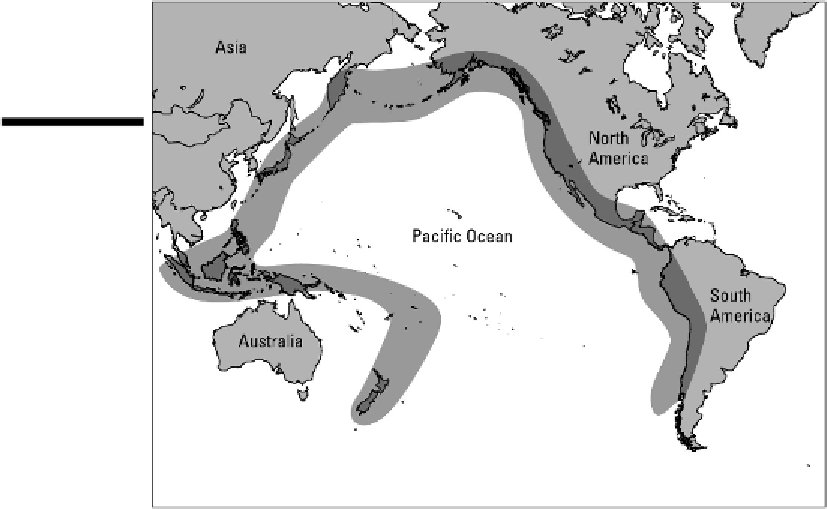Geology Reference
In-Depth Information
Farther east, the Arabian Plate moved northward into Turkey, forming the Taurus Moun-
tains. Today the Arabian Plate continues to move toward Asia, causing earthquakes in
the region. (Check out Chapter 10 for details on plate movements and earthquakes.)
What is now the Indian subcontinent was a separate small continent at the beginning of
the Cenozoic. Over a period of 55 million years, it has moved northward from the equat-
or up into the Asian continent. Where the Indian Plate and the Asian Plate collide is the
Himalayan Mountains, the most elevated portion of earth's crust, reaching 8,848 meters
(29,000 feet and still growing!) above sea level at the top of Mt. Everest, the highest
mountain in the world.
The Circum-Pacific belt
The
Circum-Pacific orogenic belt
runs from the southern tip of South America, up its
western coast, along western North America, across the top of the Pacific Ocean, and
then down through Japan and the islands of Southeast Asia. The Circum-Pacific orogenic
belt is illustrated in Figure 21-2.
Figure 21-2:
The
Circum-Pacific
belt, called the
Ring of Fire.
This region of the earth is also called the
Ring of Fire
because it is dominated by volca-
noes produced as the Pacific Plate subducts under other plates on nearly every edge.
The Circum-Pacific orogenic belt is extremely active today, creating volcanic island arcs




